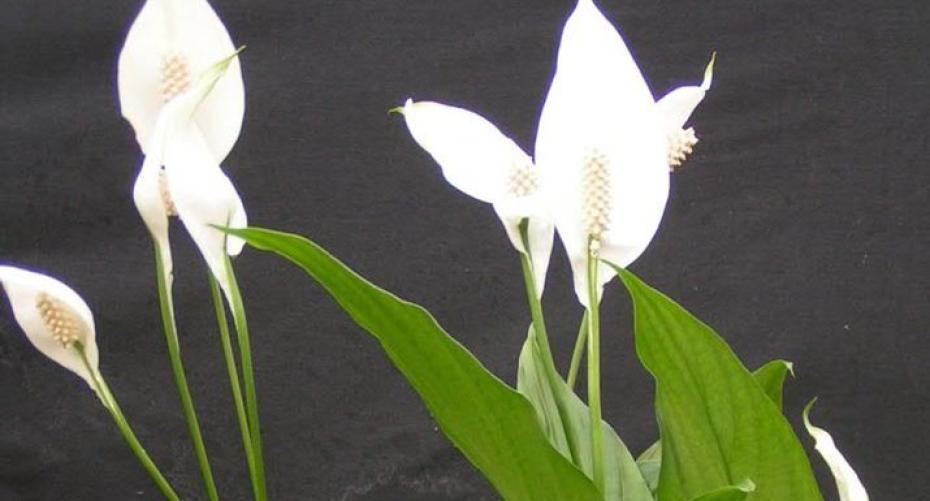Air So Pure houseplants keep you healthy and absorb carbon dioxide
Plants convert harmful carbon dioxide into oxygen and so are essential for cleaning the air. The Air So Pure plants are a group of plants which have been scientifically proven to have even more powerful air cleansing properties than other plants. The proven benefits are: the neutralisation of harmful gases, they absorb them and break them down, and improvement of the air humidity level, using their vaporisation process, resulting in the creation of a healthier indoor environment.
All plants produce oxygen but not all can purify the air. The use of the Air So Pure group of plants produces a healthier home and office environment resulting in fewer absences from work as a result. The harmful gases and particles given off by synthetic building materials together with low humidity levels can cause; people’s eyes to burn, headaches and irritate the mucus membranes of noses and throats. This is known as “Sick Building Syndrome”. The air purification properties of these plants coupled with improved ventilation can alleviate a lot of these symptoms. Tests by NASA have proved the following plants can significantly reduce the amount of harmful particles: Chrysalidocarpus lutescens, Areca Palm commonly called the Yellow Butterfly Palm; Hedera helix, Ivy; Nephrolepis, Curly Fern or Boston Fern and Spathiphyllum, Peace Lily.
The Air So Pure plants are produced in an environmentally friendly manner and as a bonus are all easy to care for.
Areca Palm
Originally from Madagascar. Needs good light but not direct sunlight. Needs a fairly even temperature of 18 – 24C (64 – 75F). Water twice a week in summer and once a week in winter; always keep the compost moist. Feed with a houseplant foliage feed once a month.
Ivy
If left to grow can be used as a hanging plant; but can be trimmed to keep compact or trained around a frame as topiary. Needs moderate light or shade, not direct sunlight. Keep constantly moist in spring and summer so water as required, but in autumn and winter let it dry out slightly before watering. Will tolerate a large temperature range between 0 – 30C (32 – 86F). Feed with a houseplant foliage feed once a month.
Nephrolepis

Originally from New Zealand and tropical Asia. Prefers a sunny position out of draughts. Needs a temperature above 18C (65F). Keep the soil moist but not over wet as it is prone to rotting, so water into the saucer and throw away any excess after half an hour. Feed with a houseplant foliage feed once a month.
Spathiphyllum
Keep in shade or partial sun, not direct sunlight. Needs a temperature of 15 – 23C (59 – 74F). Water once a week keeping the compost just moist. Feed with a balanced houseplant feed once a month. It flowers for 4 – 10 weeks after which cut the old stems back to the base. Leave to rest for 2 weeks with no feed and minimal water before letting it create new buds. Move to a drier and cooler position, this will aid bud formation.
Phlebodium
This is a sub-tropical fern but can withstand temperatures down to -2C (2.8F) for a very short period. It grows to a height of about 30cm (1'). It needs good but not direct sunlight, so a shady corner of the conservatory would be ideal. Keep the compost moist but not sodden and if possible water from below.




![Kingsbury-bench-05[1].jpg](http://www.hayesgardenworld.co.uk/cdn/shop/files/Kingsbury-bench-05_5B1_5D.jpg?v=1712162737&width=1500)
![Kingsbury-bench-01[1].jpg](http://www.hayesgardenworld.co.uk/cdn/shop/files/Kingsbury-bench-01_5B1_5D.jpg?v=1712161065&width=1500)
![tw17a-4947_0[1].jpg](http://www.hayesgardenworld.co.uk/cdn/shop/files/tw17a-4947_0_5B1_5D.jpg?v=1712161495&width=1500)
![tw17a-4947_tenbury_5ft[1].jpg](http://www.hayesgardenworld.co.uk/cdn/shop/files/tw17a-4947_tenbury_5ft_5B1_5D.jpg?v=1712161172&width=1500)
![tw17a-4952_tenbury_4ft[1].jpg](http://www.hayesgardenworld.co.uk/cdn/shop/files/tw17a-4952_tenbury_4ft_5B1_5D.jpg?v=1712161034&width=1500)
![thumbnail_IMG_1565-kik_2[1].jpg](http://www.hayesgardenworld.co.uk/cdn/shop/files/thumbnail_IMG_1565-kik_2_5B1_5D.jpg?v=1712226536&width=1500)
![thumbnail_IMG_1565-kik_1[3].jpg](http://www.hayesgardenworld.co.uk/cdn/shop/files/thumbnail_IMG_1565-kik_1_5B3_5D.jpg?v=1712159637&width=1500)



![WD-XgESA[1].jpeg](http://www.hayesgardenworld.co.uk/cdn/shop/files/WD-XgESA_5B1_5D.jpg?v=1712159609&width=1500)